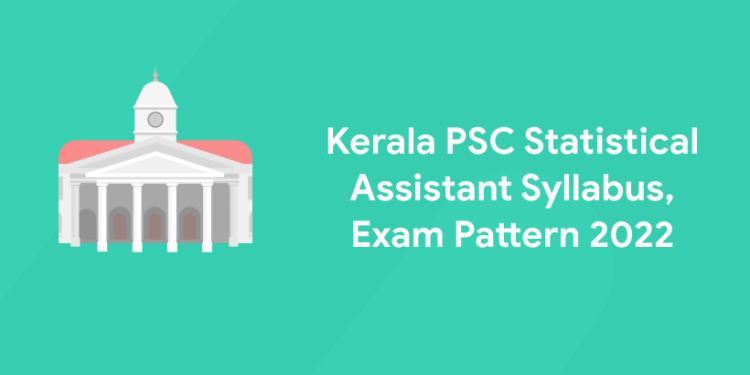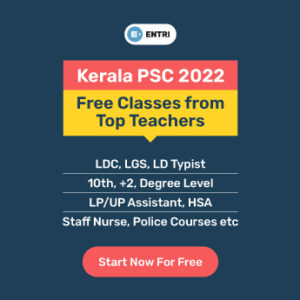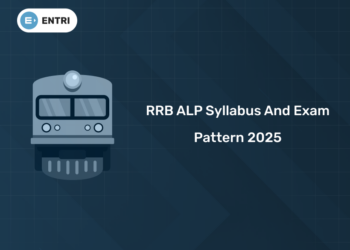Table of Contents
Kerala Public Service Commission (KPSC) have released the syllabus for Statistical Assistant Grade-II/ Statistical Investigator Grade-II under the category 39/2020. Kerala PSC Statistical Assistant Mains Exam is scheduled to be conducted on June 4, 2022.
Kerala PSC Statistical Assistant Exam 2022: Syllabus
PART I ECONOMICS
Module I. Microeconomic Theory and Applications (4 marks)
Theory of consumer behavior – utility functions – demand analysis – price, income and substitution effects – theory and applications of indifference curves – revealed preference theory – recent developments in the theory of demand – LES, CES demand functions – Bandwagon, Snob and Veblen effects
Theory of costs and production – traditional and modern theories of costs – production function – Cobb Douglas, CES, VES and translog production functions – Producer’s equilibrium using Isoquants
Market structure and equilibrium price and output determination – perfect competition – monopoly – monopolistic competition – oligopoly markets – game theory and it’s applications
Theory of distribution – marginal productivity – Euler’s theorem and adding up problem – contributions of Ricardo, Marx, Kalecky – partial and general equilibrium
Module II: Macroeconomic Theory and Applications (4 marks)
National income accounting – classical and Keynesian analysis of macro aggregates – IS-LM model – policy analysis in the closed and open systems – Mundell -Fleming Model
Behavioural foundations of macroeconomics – consumption functions and puzzle – absolute, relative, permanent and life cycle hypotheses of consumption – investment functions – neo classical, Keynesian and accelerator theories of investment
Theory of business cycle – inflation and unemployment – aggregate demand and supply analysis of business cycles – theoretical contributions of Samuelson, Hicks and Kaldor – multiplier and accelerator – great depression and financial crisis – alternative views – classical, Keynesian and monetarist approaches to inflation and unemployment – Philip’s curve – sacrifice ratio and Okun’s law
Macroeconomic schools and policies – schools in macroeconomics – classical, Keynesian, Monetarists, new classicals, supply side – rational expectations – new Keynesian and new political macro economics – objectives of macroeconomic policy – monetary policy– fiscal policy– income policy
Module III: Quantitative Methods for Economic Analysis (4 marks)
Statistical methods – measures of central tendency – measures of dispersion –skewness and kurtosis – correlation –partial and multiple regression analysis – probability Bayes’ theorem – distribution – binomial, poisson, and normal distributions and their properties
Mathematical methods – matrix operation – determinants – static and dynamic input-output models – linear programming – duality and shadow prices– interpretation of revenue, cost, demand, supply functions, elasticities – market equilibrium – consumer’s and producer’s surplus
Econometric methods – methodology of econometric research – simple and general linear econometric models– estimation of parameters – co-efficient of determination – research methodology – sampling – types and techniques – hypothesis testing – research design – collection, organization and analysis of data
Module IV: Economic Development, Public Finance and International Trade (4 marks)
Concept and measurement of economic development – meaning of development – indicators of development – HDI – inequalities in income distribution – Lorenz curve and Gini coefficient
Theories of economic growth – classical theories – neo-classical growth theories – partial theories of growth – Lewis theory of development with unlimited supply of labour – Fei-Ranis theory – balanced growth – Rosenstein Rodan, Nurkse and Lewis – unbalanced growth- low level equilibrium trap – critical minimum effort thesis – Harrod Domar and Solow model
Money and banking – public finance – theories of international trade – theories of international trade – Smith, Ricardo, Heckscher-Ohlin – balance of payments – forms of economic integration–recent developments
Module V: Development Experiences of India and Kerala (4 marks)
Growth and structural changes of Indian Economy – Growth and sector-wise contribution to GDP and employment – demographic features – development strategies in India – economic planning in India – objectives and achievements – development strategies in India – NITI Aayog – Economic Reforms – recent developments
Economic policy and development in India – issues and policies in agriculture, Industry, Trade, Infrastructure – price movements and India’s monetary, fiscal and financial sector policies and reforms- recent developments
Kerala’s economic development – Kerala model of development – poverty and unemployment in Kerala – structural changes in Kerala’s economy- performance of agriculture, industry, infrastructure and services – issues of migration, urbanisation and demographic features – fiscal scenario in Kerala – decentralisation and achievements – recent developments
1: Which Year First Assembly Election was held in Kerala?
PART II MATHEMATICS
Module I (4 marks)
Calculus:
Relations, functions, limits, continuity, differentiation, indefinite integral and definite integral, First
order differential equations.
Module II (4 marks)
Number theory and Algebra.
Divisibility of numbers, prime factorisation, GCD, LCM, division algorithm, Euclidean algorithm, congruences- linear congruences, Euler’s totient function, Little Fermat’s theorem, Euclid’s theorem – its applications.
Polynomials, factorisation, roots, Groups- cyclic groups, permutation groups
Module III (4 marks)
Linear Algebra
Linear equations, matrices and determinants, vector space, linear dependence, linear independence,
basis, dimension. Linear transformations, matrix of linear transformation, rank, nullity, characteristic equation, characteristic values, diagonalization.
Module IV (4 marks)
Real Analysis:
Properties of real numbers, countability, sequence of real numbers and its convergence, series of real numbers and ites convergence, Riemann integral, double integral and triple integral.
Module V (4 marks)
Complex Analysis
Complex Numbers, Analytic functions, power series, line integral, Cauchy’s integral formula, Cauchy’s theorem, singularities, Laurent series, harmonic function.
Enroll in Kerala's Top-rated Kerala PSC Coaching Program!
സർക്കാർ ജോലി എന്ന സ്വപ്നം ഇനി സ്വപ്നം മാത്രമല്ല! Join Entri's Kerala PSC Coaching Programs
Join Now!
PART III STATISTICS
1. Descriptive Statistics: Measures of central tendency, Absolute and relative measures of dispersion, Skewness, Kurtosis, Principle of least squares and fitting of curves, Correlation and Regression, Partial and Multiple correlation. (Marks: 2)
2. Probability theory: Definitions, Addition theorem, Multiplication theorem, Conditional probability and Bayes’ theorem. Theorem of total probability – Random variables, expectation, moments, generating functions -sequences of random variables and independence of random variables. Law of large numbers, Central limit theorem and its applications. (Marks: 4)
3. Distribution Theory: (i) Discrete distributions – Binomial, Poisson, Geometric, Negative binomial, Hyper-geometric and Multinomial distributions; (ii) Continuous distributions-Uniform, Exponential, Gamma, Beta, Normal, Log-normal, Logistic, Weibull, Pareto and bivariate normal distributions; (iii) Sampling distributions: Student’s t, F and Chi-square distributions. (Marks: 4)
4. (i) Estimation: Basic properties of estimators, concepts of sufficiency, UMVUE and completeness, Methods of estimation.
(ii) Tests of Hypotheses – Two types of errors , significance level, size and power of a test, Tests based on normal, t, Chi-square and F distributions. (Marks: 2)
5. Sampling Theory: Various methods of sampling – Simple random sampling, Stratified random sampling, systematic sampling, PPS Sampling, cluster sampling, adaptive sampling, Ratio and Regression methods of estimation. (Marks: 2)
6. Design of Experiments: Basic properties of experimentation, ANOVA, CRD, RBD, LSD, Factorial designs, BIBD, Split-plot designs. (Marks: 2)
7. (i) Vital Statistics: Rates and ratios of vital events, Mortality and fertility, Measurement of mortality and fertility, Central mortality rate. (ii) Time series analysis: Economic time series and its different components, Additive and
multiplicative models, Determination of trend, Construction of seasonal indices. (Marks: 2)
8. (i) Economic statistics; Index numbers, its definitions, applications, price relatives, link and chain relatives. Use of averages: Simple aggregative and weighted average methods, Laspeyre’s, Paasche’s and Fisher index numbers, Time and factor reversal test of index numbers.
(ii) Official statistics: Introduction to Indian Statistical systems, CSO, NSSO, Census, National income statistics, Methods of national income estimation. (Marks: 2)
PART IV COMMERCE
Module 1: I Management Concepts and Thought: Meaning and importance of management, management levels -Nature of management – science, art or profession-Evolution and development of management thought, Management thinkers, Management process, Management principles, Functions of management. (Marks: 5)
Module 2: Introduction to Accounting – Meaning and objectives of accounting – types of accounting – financial accounting, cost accounting and management accounting – Accounting concepts and conventions – GAAP- Indian Accounting Standards- Procedure for setting various Accounting Standards. (Marks: 5)
Module 3: Financial and Capital Market – structure of financial and capital market – Classification – Primary & secondary – Methods of floatation of capital –Functions of stock exchange – Securities traded in the stock exchange – Major stock exchanges in India- Role and functions of SEBI. (Marks: 5)
Module 4: Banking Theory and Practice: Evolution and structure of banking – Types of Banks in India – Public sector banks, private sector banks, scheduled banks, foreign banks, new generation
Banks –
Innovations and reforms in banking sector– E-banking, CORE, ECS, EFT, RTGS, NEFT, SWIFT, mobile banking, internet banking, retail banking – Banking Ombudsman. (Marks: 5)
PART V (20 Marks)
General Knowledge, Current Affairs, Renaissance in Kerala
RENAISSANCE IN KERALA AND FREEDOM MOVEMENT
Towards A New Society
Introduction to English education – various missionary organisations and their functioning-founding of educational institutions, factories.printing press etc.
Efforts To Reform The Society
(A) SocioReligious reform Movements
SNDP Yogam, Nair Service Society, Yogakshema Sabha, Sadhu Jana Paripalana Sangham, Vaala Samudaya Parishkarani Sabha, Samathwa Samajam, Islam Dharma Paripalana Sangham, Prathyaksha Raksha Daiva Sabha, Sahodara Prasthanam etc.
(B) Struggles and Social Revolts
Upper cloth revolts.Channar agitation, Vaikom Sathyagraha, Guruvayoor Sathyagraha, Paliyam Sathyagraha. Kuttamkulam Sathyagraha, Temple Entry Proclamation, Temple Entry Act .Malyalee Memorial, Ezhava Memorial etc. Malabar riots, Civil Disobedience Movement, Abstention movement etc.
Role Of Press In Renaissance
Malayalee, Swadeshabhimani, Vivekodayam, Mithavadi, Swaraj, Malayala Manorama, Bhashaposhini, Mathnubhoomi, Kerala Kaumudi, Samadarsi, Kesari, AI-Ameen, Prabhatham, Yukthivadi, etc
Awakening Through Literature
Novel, Drama, Poetry, Purogamana Sahithya Prasthanam, Nataka Prashtanam, Library movement etc
Women And Social Change
Parvathi Nenmenimangalam, Arya Pallam, A V Kuttimalu Amma, Lalitha Prabhu.Akkamma Cheriyan, Anna Chandi, Lalithambika Antharjanam and others
Leaders Of Renaissance
Thycaud Ayya Vaikundar, Sree Narayana Guru, Ayyan Kali.Chattampi Swamikal, Brahmananda Sivayogi, Vagbhadananda, Poikayil Yohannan(Kumara Guru) Dr Palpu, Palakkunnath Abraham Malpan, Mampuram Thangal, Sahodaran Ayyappan, Pandit K P Karuppan, Pampadi John Joseph, Mannathu Padmanabhan, V T Bhattathirippad, Vakkom Abdul Khadar Maulavi, Makthi Thangal, Blessed Elias Kuriakose Chaavra, Barrister G P Pillai, TK Madhavan, Moorkoth Kumaran, C. Krishnan, K P Kesava Menon, Dr.Ayyathan Gopalan, C V Kunjuraman, Kuroor Neelakantan Namboothiripad, Velukkutty Arayan, K P Vellon, P K Chathan Master, K Kelappan, P. Krishna
Pillai, A K Gopalan, T R Krishnaswami Iyer, C Kesavan. Swami Ananda Theerthan , M C Joseph, Kuttippuzha Krishnapillai and others
Literary Figures
Kodungallur Kunhikkuttan Thampuran, KeralaVarma Valiyakoyi Thampuran, Kandathil Varghese Mappila. Kumaran Asan, Vallathol Narayana Menon, Ulloor S Parameswara Iyer, G Sankara Kurup, Changampuzha Krishna Pillai, Chandu Menon, Vaikom Muhammad Basheer. Kesav Dev, Thakazhi Sivasankara Pillai, Ponkunnam Varky, S K Pottakkad and others
General Knowledge and Current Affairs
Salient Features of Indian Constitution
Salient features of the Constitution – Preamble- Its significance and its place in the interpretation of the Constitution.
Fundamental Rights – Directive Principles of State Policy – Relation between Fundamental Rights
and Directive Principles – Fundamental Duties.
Executive – Legislature – Judiciary – Both at Union and State Level. – Other Constitutional Authorities.
Centre-State Relations – Legislative – Administrative and Financial.
Services under the Union and the States.
Emergency Provisions.
Amendment Provisions of the Constitution.
Social Welfare Legislations and Programmes
Social Service Legislations like Right to Information Act, Prevention of atrocities against Women & Children, Food Security Act, Environmental Acts etc. and Social Welfare Programmes like Employment Guarantee Programme, Organ and Blood Donation etc.
CURRENT AFFAIRS
Enroll in Kerala's Top-rated Kerala PSC Coaching Program!
സർക്കാർ ജോലി എന്ന സ്വപ്നം ഇനി സ്വപ്നം മാത്രമല്ല! Join Entri's Kerala PSC Coaching Programs
Join Now!Kerala PSC Statistical Assistant Syllabus PDF
Download the official PDF for Kerala PSC Statistical assistant grade 2 syllabus.
Statistical Assistant Syllabus Official PDF – Download here
Kerala PSC Statistical Assistant 2022 Exam Pattern
| Sl.No | Name of The Subject | Maximum Marks | Time Duration |
| 1 | Relevant Disciplines (Statistical) | 100 Marks | 1.15 Hour |
KPSC Statistical Assistant 2022: Interview
After the Kerala PSC Statistical Assistant Exam, the eligible candidates are supposed to wait for the interview letter. While approaching for the interview, the aspirants must have a thorough knowledge about the area and current affairs.
Click Here to Get Free Mock Tests for Kerala PSC Exams!!
Document verification
For the document verification, the candidates are expected to bring the below mentioned documents without fail. Any error or malpractice in this section can cause nullification of the opportunity.
- 10th / 12th School Certificate
- Mark Sheet from HSLC
- School Leaving Certificate
- Graduation Completed Certificate
- Caste Certificate or Religion Certificate
- Name or Photo ID Proof
- Aadhar Card and License
- Address Proof
- Extra Activities Participate Certificate
- Self-attested photocopies of Certificate
- Registration Certificate
- Experience Certificate












